Art Style: Digidrive Review
|
|
See PixlBit's Review Policies

On 11/20/2009 at 10:09 AM by Nick DiMola The latest addition to the WiiWare and DSiWare series is just as crazy as ever. |

Fans of puzzle games, especially the Art Style series, should definitely check out this game.
I love the Art Style series; from Orbient to Precipice, the entire series has been absolutely phenomenal. I find myself booting up the games quite often for quick play sessions in my spare time, so of course, with the release of Digidrive, as you would expect I was quite excited. Not only was it a new Art Style game, but an Art Style game that was a bit Generations game that I had enjoyed very much.
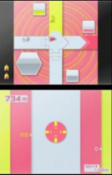
Art Style: Digidrive is essentially unchanged from its bit Generations: Digidrive form. It now incorporates a new touch screen control scheme as well as cleaner graphics. Unlike the rest of the games in the series, Digidrive is developed by Q-Games rather than skip Ltd. While this may worry some, Digidrive is just as obtuse and crazy as the others.
Unfortunately, given the abstract nature of the game, it's a bit tough to explain, so I'll do my best. Digidrive tasks players with controlling the intersection of two roads. Just like a real intersection, cars traverse these roads, and in order to avoid catastrophe must be directed to the proper location.
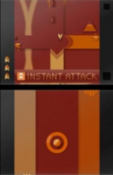
The game features three different varieties of vehicles, a black one, red one, and white one. These vehicles will approach the intersection from all four directions and will be pushed in the direction the player is holding on either the D-Pad or the touch screen. Players will try and stack similar colored cars in each of the lanes. When five are stacked, they will disappear and add a certain amount to a gauge located next to that particular offshoot of the road.
A fourth vehicle type will allow players to take use of the power built up in that gauge. When this emergency vehicle (complete with sirens) goes down a road with built up power, it moves a core depicted on the top screen a certain number of meters. Moving the core is necessary, because a piston is constantly approaching it. When the piston meets the core, the game ends.
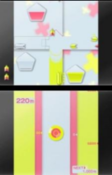
Part of the genius of Digidrive is the management of both the cars and the gauges. Of course, it's important to direct similar cars to the same road, but furthermore players mustn't allow different cars down the road or else it could destroy the power that had been built in the gauge. However, players can, in certain instances, send a new vehicle down an established road and double the power by having it split across two other gauges.
Furthermore, players will need to keep a constant eye on the piston. At the start of each round, players are given three emergency vehicles to deploy at their discretion in order to save the core. Strategic use of these vehicles is necessary, because the normal emergency vehicles do not come under any given set of criteria.
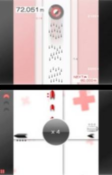
As you might expect, the distance the core travels in meters becomes the player's score for the round. Thus, it is important to build power in such a way that the core is moved the furthest each time an emergency vehicle is sent down a given road. Because the power gauge can be doubled given traffic direction is done a certain way, players will need to do some strategic planning while they are pushing vehicles around the intersection with their twitch reflexes. The better the player's plan, the further they will be able to push the core.
While the game seems quite complicated on paper, it is in reality, very simple. It has depth in its construction, but is simple enough that anyone could enjoy it. Digidrive is the type of game that you obsess over in an attempt to push the core the furthest. After each round you'll convince yourself that you can do better, and you will continue to push your boundaries with each new game.
Players looking for another fun romp in the Art Style series should definitely spend their next 500 Nintendo Points on this title. It has a unique and engaging premise that forces players to both multitask and strategize all on the fly.








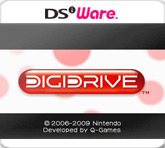

Comments